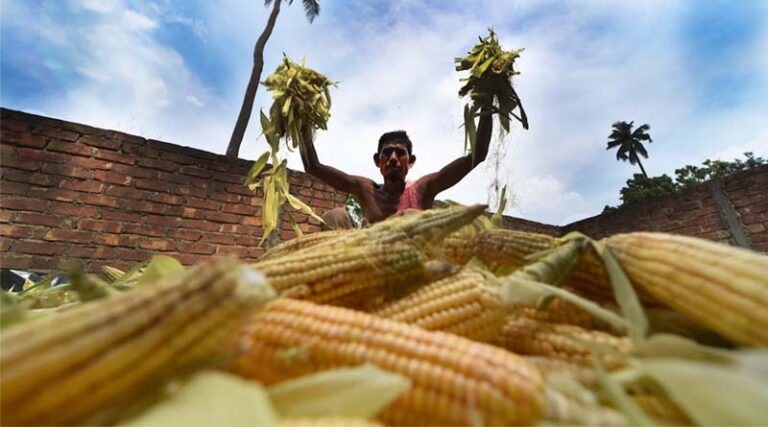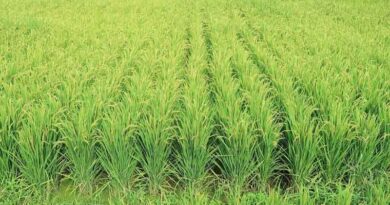
Maize Prices in India Fall Nearly 10% in September 2025 Amid Surplus Supplies
04 October 2025, New Delhi: Wholesale maize prices across major Indian mandis registered a sharp decline in September 2025, with the all-India average falling to ₹2,115.40 per quintal from ₹2,327.25 in August. Compared with September 2024, when prices averaged ₹2,356.38, the market was down by over 10%, indicating sustained pressure despite India’s increasing maize use in ethanol production.
State-level divergences in September
The largest monthly declines were seen in Madhya Pradesh (−21%), Telangana (−19.1%), and Maharashtra (−18.7%), driven by heavy arrivals and surplus supply. Haryana, however, emerged as an outlier, recording an 18.3% rise month-on-month and a 9% gain year-on-year, possibly due to localized procurement and industrial demand.
States such as Gujarat, Punjab, and Odisha witnessed double-digit year-on-year declines, while Karnataka and Tamil Nadu managed small year-on-year gains, pointing to regional variations in demand and supply balances.
Acreage expansion drives supply pressure
Maize cultivation area rose to 94.95 lakh hectares in Kharif 2025, up from 84.30 lakh hectares last year — an increase of over 12.63%. This significant acreage expansion, coupled with favourable monsoon conditions, boosted arrivals in mandis and weighed on prices.
Global cereal prices also trended lower in September, reducing export opportunities as a support mechanism for Indian markets. With international benchmarks weak, domestic surpluses directly translated into lower mandi rates.
State wise Wholesale Prices Monthly Analysis for Maize September, 2025 (Prices in Rs/Quintal)
| State | Prices September, 2025 | Prices August, 2025 | Prices September, 2024 | % Change(Over Previous Month) | % Change(Over Previous Year) |
| Andhra Pradesh | 2312 | 2308 | 2520 | 0.17 | -8.25 |
| Chattisgarh | 2006 | 1961 | 2148 | 2.29 | -6.61 |
| Gujarat | 2249 | 2354 | 2580 | -4.46 | -12.83 |
| Haryana | 2608 | 2205 | 2393 | 18.28 | 8.98 |
| Karnataka | 2337 | 2371 | 2256 | -1.43 | 3.59 |
| Madhya Pradesh | 1704 | 2157 | 1930 | -21 | -11.71 |
| Maharashtra | 1959 | 2410 | 1857 | -18.71 | 5.49 |
| Manipur | 3750 | __ | __ | ||
| Nagaland | 3800 | __ | __ | ||
| NCT of Delhi | 2096 | 2152 | 2396 | -2.6 | -12.52 |
| Odisha | 2004 | 2273 | 2279 | -11.83 | -12.07 |
| Punjab | 2041 | 2083 | 2455 | -2.02 | -16.86 |
| Rajasthan | 2086 | 2209 | 2131 | -5.57 | -2.11 |
| Tamil Nadu | 2856 | 2950 | 2824 | -3.19 | 1.13 |
| Telangana | 1823 | 2254 | 2271 | -19.12 | -19.73 |
| Uttar Pradesh | 2183 | 2157 | 2339 | 1.21 | -6.67 |
| Uttrakhand | 1467 | 1592 | 1573 | -7.85 | -6.74 |
| Average | 2115.4 | 2327.25 | 2356.38 |
Ethanol blending: A double-edged sword
India’s transition to 20% ethanol blending (E20) has opened a major industrial demand channel for maize. However, while ethanol distilleries absorb significant volumes, they also produce large amounts of Distillers’ Dried Grains with Solubles (DDGS), which substitute for feed grains and dampen maize demand in the livestock sector.
This dual effect has limited the extent to which ethanol demand can offset harvest-driven oversupply, leaving mandi prices under pressure.
What lies ahead
Market watchers suggest that prices in the coming months will hinge on the pace of maize procurement by ethanol plants, continued arrival pressure in mandis, the ability of farmers to stagger sales through better storage and marketing infrastructure and international cereal price trends, which remain subdued.
Economist’s assessment
The September data confirms that India’s maize market is caught between structural demand growth from ethanol and seasonal supply shocks from expanded cultivation. In the short run, supply expansion has outpaced demand absorption, pulling prices down. Without stronger storage and market linkages, farmers in states with sharp declines may face income stress despite policy efforts to create new demand channels.
Also Read: Trump’s Tariffs Against Brazil Are Illegal, but Remain in Effect Until Final Ruling in the US
📢 If You’re in Agriculture, Make Sure the Right People Hear Your Story.
From product launches to strategic announcements, Global Agriculture offers unmatched visibility across international agri-business markets. Connect with us at pr@global-agriculture.com to explore editorial and advertising opportunities that reach the right audience, worldwide.






